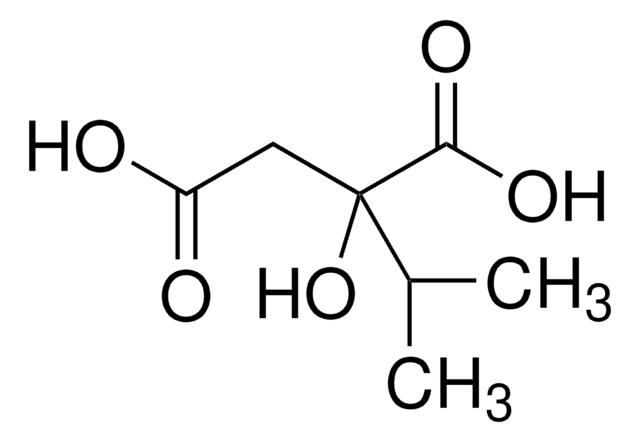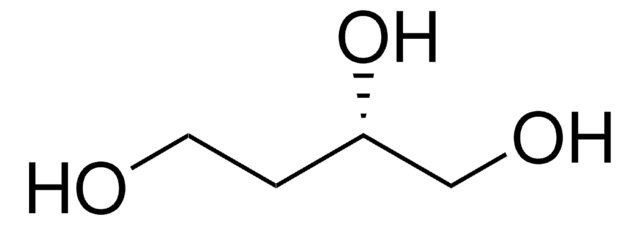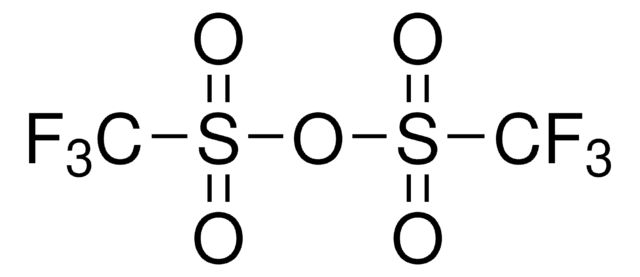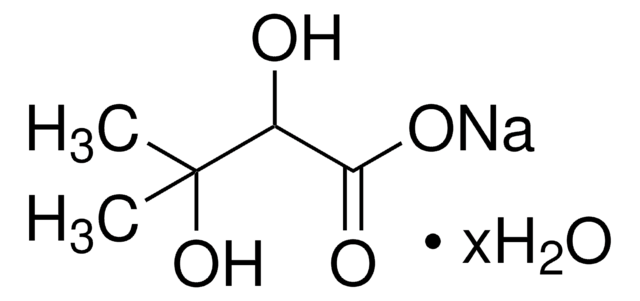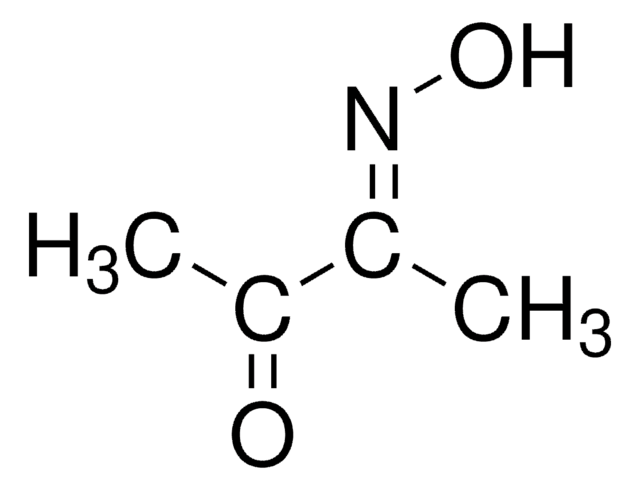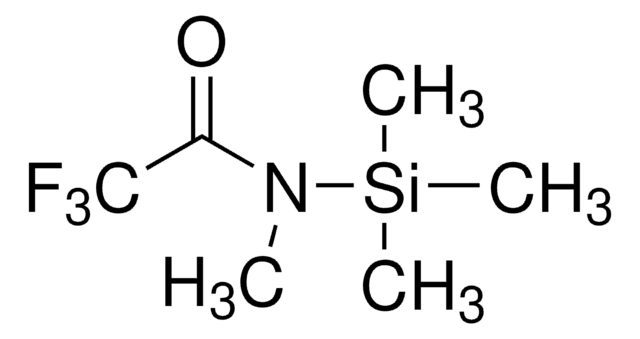333115
2-Isopropylmalic acid
98%
Synonym(s):
2-Hydroxy-2-isopropylsuccinic acid
Sign Into View Organizational & Contract Pricing
All Photos(1)
About This Item
Linear Formula:
HO2CCH2C[CH(CH3)2](OH)CO2H
CAS Number:
Molecular Weight:
176.17
MDL number:
UNSPSC Code:
12352100
PubChem Substance ID:
NACRES:
NA.22
Recommended Products
Quality Level
assay
98%
mp
144-146 °C (lit.)
functional group
carboxylic acid
hydroxyl
SMILES string
CC(C)C(O)(CC(O)=O)C(O)=O
InChI
1S/C7H12O5/c1-4(2)7(12,6(10)11)3-5(8)9/h4,12H,3H2,1-2H3,(H,8,9)(H,10,11)
InChI key
BITYXLXUCSKTJS-UHFFFAOYSA-N
Looking for similar products? Visit Product Comparison Guide
Related Categories
General description
2-Isopropylmalic acid is an intermediate formed during leucine biosynthesis. Budding yeast Saccharomyces cerevisiae secrets 2-isopropylmalic acid and helps in reduction of aluminum toxicity by forming chelate with Al ions, thereby preventing them from entering the cells.
Application
2-Isopropylmalic acid was employed as an internal standard in diagnostic model for pancreatic cancer using GC/MS-based human serum metabolomics.
Storage Class
11 - Combustible Solids
wgk_germany
WGK 3
flash_point_f
Not applicable
flash_point_c
Not applicable
ppe
dust mask type N95 (US), Eyeshields, Gloves
Choose from one of the most recent versions:
Already Own This Product?
Find documentation for the products that you have recently purchased in the Document Library.
Customers Also Viewed
Luiz Pedro S de Carvalho et al.
Biochemistry, 48(9), 1996-2004 (2009-01-27)
The enzyme alpha-isopropylmalate synthase from Mycobacterium tuberculosis (MtIPMS) has been identified as a possible target for the design of new antitubercular therapeutics. Recently, it was shown that MtIPMS is subject to slow-onset, feedback inhibition by l-leucine, the first instance of
Taisuke Suzuki et al.
Biological trace element research, 120(1-3), 257-263 (2007-10-06)
The budding yeast Saccharomyces cerevisiae secretes 2-isopropylmalic acid (2-iPMA), an intermediate in leucine biosynthesis. Because 2-iPMA binds Al(III) in the culture medium, it is thought to reduce toxicity by Al(III). The effects of 2-iPMA and malic acid (MA) on Al
Carlo M T Marobbio et al.
The Journal of biological chemistry, 283(42), 28445-28453 (2008-08-07)
In Saccharomyces cerevisiae, alpha-isopropylmalate (alpha-IPM), which is produced in mitochondria, must be exported to the cytosol where it is required for leucine biosynthesis. Recombinant and reconstituted mitochondrial oxalacetate carrier (Oac1p) efficiently transported alpha-IPM in addition to its known substrates oxalacetate
Y Hu et al.
Molecular and cellular biology, 15(1), 52-57 (1995-01-01)
The Leu3 protein of Saccharomyces cerevisiae has been shown to be a transcriptional regulator of genes encoding enzymes of the branched-chain amino acid biosynthetic pathways. Leu3 binds to upstream activating sequences (UASLEU) found in the promoters of LEU1, LEU2, LEU4
D Armaleo et al.
Molecular & general genetics : MGG, 200(2), 346-349 (1985-01-01)
The leu-3/alpha-IPM (alpha-isopropylmalate) regulatory system, previously shown to control several genes of leucine, isoleucine, valine, and histidine biosynthesis, appears likely to be involved also in the regulation of overall RNA and protein synthesis in Neurospora. Upon addition of alpha-IPM the
Our team of scientists has experience in all areas of research including Life Science, Material Science, Chemical Synthesis, Chromatography, Analytical and many others.
Contact Technical Service
